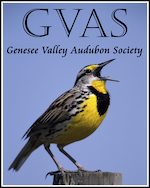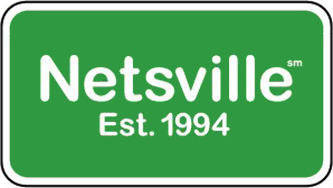Feeding Those Growing Eyases

The four young eyases have spent their first week in the nest box, and they all appear to be doing very well. Now that they’re a bit older, their downy coats provide them with some protection against the temperature, and you’ll see them huddling together for mutual warmth as Mariah and Kaver leave them alone for longer periods of time. They’re also developing the ability to regulate their own body temperature, and soon they’ll grow a second coat of down. They’re growing fast! They’ve doubled in size from when they hatched, and they’ll continue that rapid pace for the next several weeks.
They’re being fed regularly, as often as every 90 to 120 minutes. To keep up that pace, Kaver’s doing a lot of hunting. Watchers have observed him taking prey beginning in the pre-dawn hours and throughout the day. Often when he catches a bird, he’ll bring it right into the nest box, but sometimes he takes it to a nearby perch where he’ll eat some of it himself before feeding the eyases. Sometimes, he just stores the food by stashing it on one of the ledges on the Kodak tower, or by taking it to one of the buildings downtown where he and Mariah like to stay outside of nesting season. This process, called caching, provides the falcons with a food reserve in case they’re unsuccessful at hunting.
Speaking of hunting, we should probably review how that’s done. A Peregrine’s main food source is other birds which it catches in flight. If it can get close to a prey bird by outrunning it (they’re fast flyers, after all), the falcon will snag the bird out of the air with its talons, then snap its neck with its notched bill. However, while Peregrines are fast, they’re not always as maneuverable as their prey, so their preferred hunting method is to stoop, or dive upon the prey from a great height. A stooping Peregrine will often come out of the sun, the better to surprise its target. At the moment of impact, the falcon balls up its talons like fists and slams into its victim, stunning the prey or killing it outright. Then it catches the falling bird and dispatches it as I described above. A stooping Peregrine is the fastest animal on earth. Diving Peregrines have been measured at speeds exceeding 230MPH! Of course, a Peregrine needs to get pretty high to build up that kind of diving speed. That’s why they like to hunt from high perches. A location like the Kodak tower makes a perfect hunting perch, because it is very tall, and there are few other tall structures nearby to block their view of potential prey.
Sometimes we hear from Falconcam fans who claim to have seen Mariah or Kaver hunting in their neighborhoods or back yards. Though it would be great to think that Mariah and Kaver are making visits to backyard feeders, there are a few reasons why this is probably not the case. First, there are so many birds in the immediate area around the Kodak tower that it’s not necessary for the falcons to go very far in order to hunt. There have been reliable sightings of Mariah and Kaver hunting a few miles from downtown Rochester, but no credible evidence that they venture as far as the suburbs. Also, their typical hunting behavior isn’t the kind that’s likely to allow them to hunt successfully in people’s yards. Taking small birds at backyard feeders requires more maneuverability than Peregrines possess– they’re simply not designed for the kind of quick zig-zag tail-chasing flight needed to grab birds that are darting among trees, shrubs and houses.
It is much more likely that the people making these reports are seeing either Cooper’s hawks (like the one in the picture at the right), or Sharp-shinned hawks. Both of these raptors belong to a family of hawks called Accipiters, and they are often confused with Peregrines. They have similar coloration, and the Cooper’s hawk is roughly the same size as a Peregrine. Called “Coops” and “Sharpies” by birders, these small hawks feed on birds attracted to backyard feeders, and their hunting styles are perfect for the tight turning and weaving needed to take prey in wooded lots and suburban neighborhoods.
Another possibility is that the reporter might be seeing a kind of falcon called a Merlin. Merlins look even more like Peregrines than Coopers or Sharp-shinned hawks since biologically speaking the two species are cousins. But like the hawks, Merlins are maneuverable enough to grab birds from trees, bird feeders, and even off the ground. Merlins are pretty unusual around the Rochester area though– It’s more likely that you’ve seen a Coop or Sharpie.
So if you think you’ve just seen Mariah or Kaver snatch a Mourning Dove from your bird feeder, look again– you probably just saw a hawk getting dinner.






May 17th, 2007 at 10:36 PM
Thanks for the info. 1) I’ve been going to ask(and you partly answered it), how do you know if if your seeing M & K or another falcon say in the winter since neither one is tagged? 2) Did they both stay here this winter?
Since they grow so faast is it possible to have more pictures?
May 18th, 2007 at 6:09 AM
Thanks Jess, for all the great information. I have a great collection of photos, increasing in size daily. I love watching them. Good to know they’re all doing well. I must admit, I take your information and pass it off as my own knowledge of falcons, Mariah & Kaver especially. What do you think their wingspan is?
May 18th, 2007 at 8:01 AM
Jess, Thanks so much for all your great information on these two wonderful birds. I look forward every day to reading your input as to what is going on, since I’m such a novice on this new sport of falcon watching. I still cannot tell one from the other. I’m going to miss watching the activities at the nest box when the young ones leave the nest.
May 18th, 2007 at 8:45 AM
Thank you, thank you, thank you for this year’s set up for watching Mariah and Kaver. It is very educational and the program is very easy to get into and out of. They are wonderful, aren’t they? Thank you again. Shari
May 18th, 2007 at 5:54 PM
The still images are great, but I know the technology is there for a live main camera… what would it take (money wise) to make that happen? I bet LOTS of us followers would gladly chip in to be able to watch live….
May 19th, 2007 at 10:49 AM
I’ve been watching the live camera in San Jose and while the “action” is great, the resolution on the full screen view leaves something to be desired. I’d love to have the live camera but only in addition to what we have now (unless the live camera technology has improved). Thanks for providing us with this wonderful bit of nature.
June 1st, 2007 at 10:04 AM
Do the growing falcons need drinking water? If so, how do they get it? Thanks for all the information!